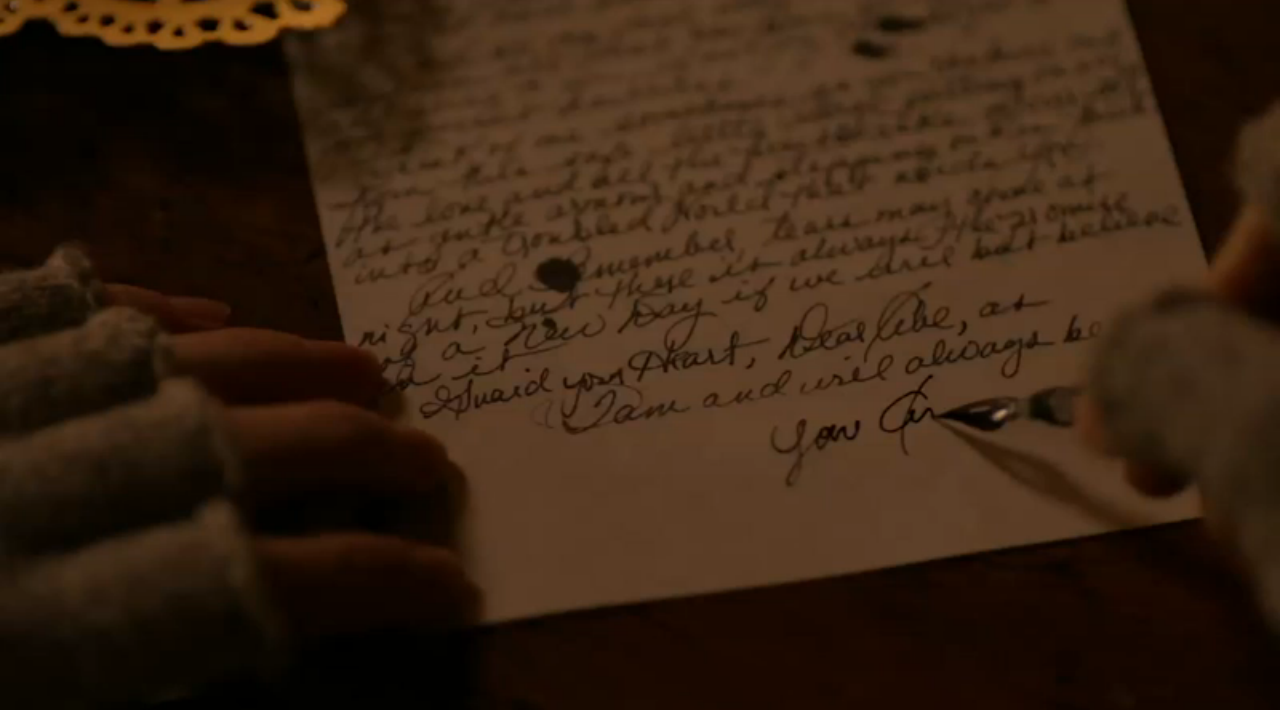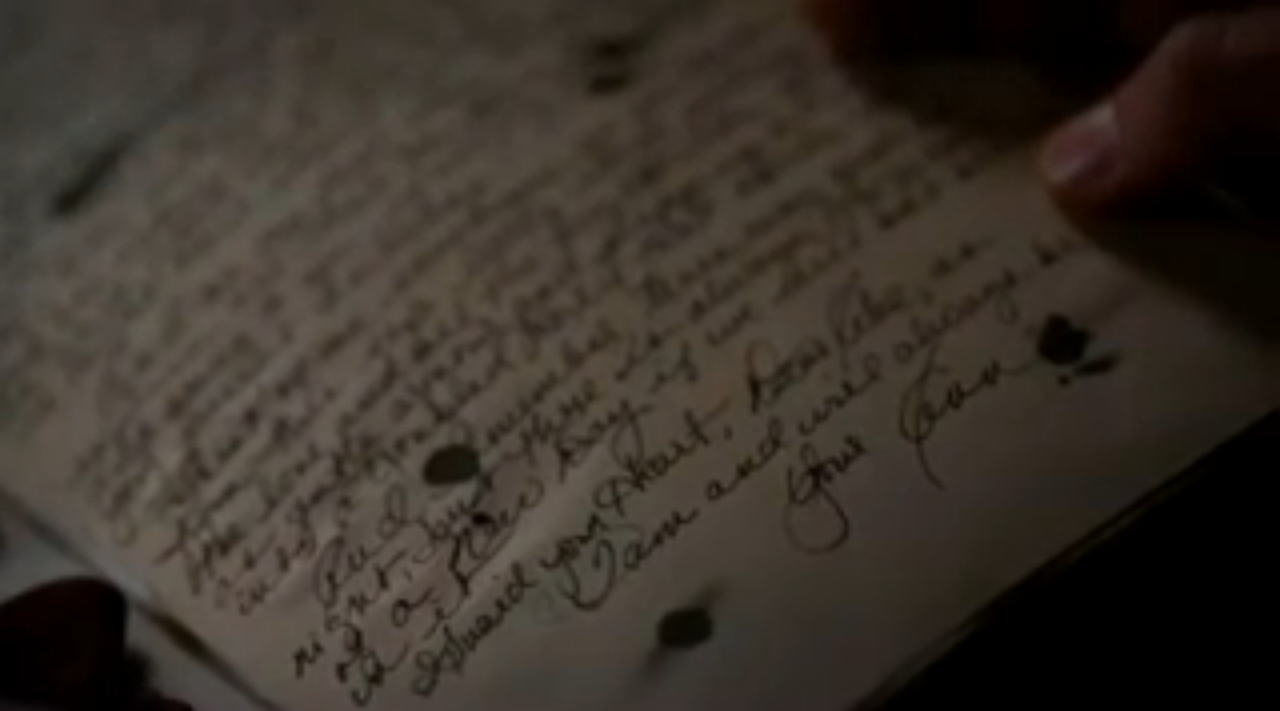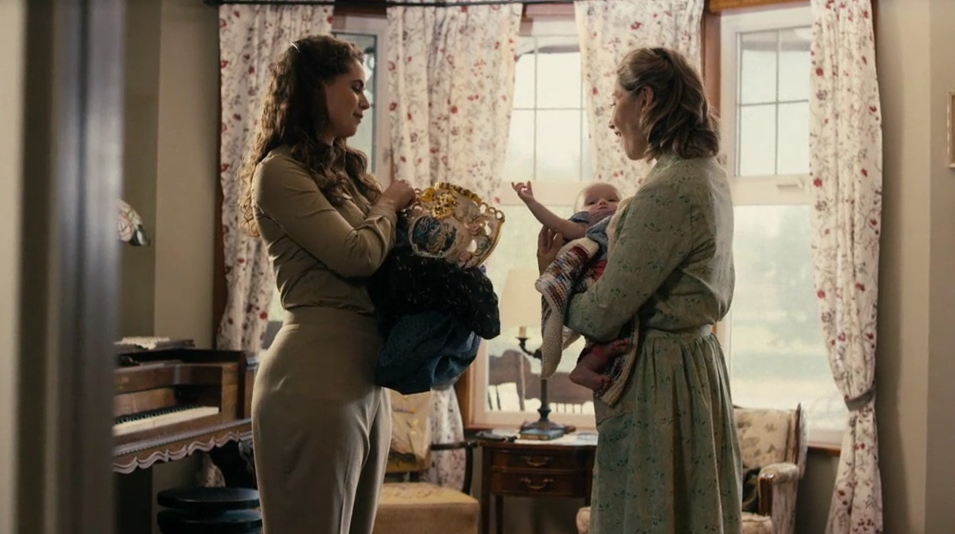Stories like The Chronicles of Narnia and The Lord of the Rings carry a considerable measure of Fantasy and Fairy Tale, and we value them because in many ways they are better at telling real things than our real world can tell things normally—as my sister explained in her own words. I think that is also why we love The Hallmark Channel, a sort of bastion of predictable happily-ever-afters and determined goodness that remind us of this world’s happy ending. Since its inception in 2013, one of the most beloved series on The Hallmark Channel is Signed, Sealed, Delivered, written and produced by Martha Williamson and Brandi Harkonen. Though it does not market itself in the Fairy Tale genre, the show does not hide from the certainty of an unseen reality, and one can easily trace the characters of gentleman and lady, hero and warrior—and the battles and trials that give way to discovery and hope.
Exploring elements of SSD in conjunction with its Fairy Tale allusions helps us learn more about the nature of story, and why the show has been such a blessing to so many. I will canvas this study in another post. For now, let’s turn to the core reasons for our creating. If we know the role of the Fairy Tale, we can better understand its function and presence, and why we as creators might seek to join ranks with its large company of storytellers.
"The Old Stories"
In the old stories, despite the impossibility of the incidents, the interest is always real and human. The princes and princesses fall in love and marry—nothing could be more human than that. Their lives and loves are crossed by human sorrows...The hero and heroine are persecuted or separated by cruel stepmothers or enchanters; they have wanderings and sorrows to suffer; they have adventures to achieve and difficulties to overcome; they must display courage, loyalty and address, courtesy, gentleness and gratitude. Thus they are living in a real human world, though it wears a mythical face, though there are giants and lions in the way. The old fairy tales which a silly sort of people disparage as too wicked and ferocious for the nursery, are really 'full of matter,' and unobtrusively teach the true lessons of our wayfaring in a world of perplexities and obstructions.
| In the old stories, despite the impossibility of the incidents, the interest is always real and human. The princes and princesses fall in love and marry—nothing could be more human than that. Their lives and loves are crossed by human sorrows...The hero and heroine are persecuted or separated by cruel stepmothers or enchanters; they have wanderings and sorrows to suffer; they have adventures to achieve and difficulties to overcome; they must display courage, loyalty and address, courtesy, gentleness and gratitude. Thus they are living in a real human world, though it wears a mythical face, though there are giants and lions in the way. The old fairy tales which a silly sort of people disparage as too wicked and ferocious for the nursery, are really 'full of matter,' and unobtrusively teach the true lessons of our wayfaring in a world of perplexities and obstructions. |
"To me, Narnia was always a real place...I was initially interviewing production designers, and a lot of people were drawing those parallels to…places where the children had created these worlds in their heads as a place they could escape to. I never saw it that way when I read [The Chronicles of Narnia] as a child. I always saw that they stepped through the wardrobe, and they ended up in Narnia, and Narnia was a real, coexistent world…I think in order to make the fantasy have the drama that you want and the jeopardy that you want, you have to believe in the real place."
A story is real to us, not only because it deals with tragedy and goodness, but because there is truth speaking to us through that world; perhaps the “mythical face” of a story actually reveals truth to us in a language that we can better understand. Fairy tales are thus an opportunity to accomplish something more than share truth about life. Adamson says that fantastical worlds have been accused of becoming an escape from reality. But if a story is real, rather than teaching us to evade reality, they show us how to bear up under it.
To Be Human Is To Create
Life is like a war. The pictures of our history insist upon it, and the current state of our world confirms it. Innately, we know the ongoing storyline of trouble and rescue; I might even go so far as to say there is a satisfaction in us to recreate it. Sometimes our work represents more of the chaos; sometimes our creating mirrors the rescue. Recognizing the bigger story of the world does not limit us in our work as artists and creators; in fact it often leads us to life resolutions. We learn how our voice—the music we perform, the stories we write, the actions we choose, and roles we play—brings goodness and truth to the world. We have felt the beauty and tragedy of life. And feeling the longing for rescue gives us resolve. Stories speak to other hearts because the longing does not have to be taught; the people understand, because they live it. And because we see the need of a longing world around us, we ask ourselves how we can help, and the question—if it turns toward hope—may become: does our creating speak into the story of rescue?
| Imagination is inherent to our creating, and we are responsible for how we cultivate it—because our art speaks into our culture. Makoto Fujimura, a Japanese painter, wrote that “We swim in the ecosystem of imagined actions. We are responsible for how we respond to that power.” He continues to speak about this responsibility in his essay, “Why Art?,” featured in his book, Refractions. "If we do not teach our children, and ourselves, that what we imagine and how we design the world can make a difference, the culture of cynicism will do that for us. If we do not infuse creativity, if we do not take the initiative to help our children imagine better neighborhoods and cities, despair will ruin their imaginative capacities and turn them into destructive forces…The life of an artist is never easy, but I take it seriously because I know that imagination has consequences." |
A Deeper Magic
| "…though the Witch knew the Deep Magic, there is a magic deeper still which she did not know. Her knowledge goes back only to the dawn of time. But if she could have looked a little further back, into the stillness and the darkness before Time dawned, she would have read there a different incantation. She would have known that when a willing victim who had committed no treachery was killed in a traitor’s stead, the Table would crack and Death itself would start working backward." (C.S. Lewis, The Lion, the Witch and the Wardrobe) The reality of our existence is that there is an older tale. Fairy tales remind us of that. They remind us that we are human. |
If we read the Bible, and if what we read has anything to do with what we believe, then we have no choice but to take angels seriously…The artist, if he is not to forget how to listen, must retain the vision which includes angels and dragons and unicorns and all the lovely creatures which our world would put in a box marked Children Only. (“Cosmos From Chaos,” Walking on Water)
When we think of Fairy Tales, we likely do not consider how they mimic the sudden strangeness, startling holiness, and unpredictable omniscience of the Bible. Perhaps we have not considered how the journey of our creating has power because it casts its vision alongside the long shadow of an older work. Maybe we need to better understand the meaning of our art. This is why Fairy Tales are part of the story.
-Kirsten
P. S. This journey analysis of Fairy Tales is leading us to a deeper study of SSD. There is more to come!




 RSS Feed
RSS Feed
